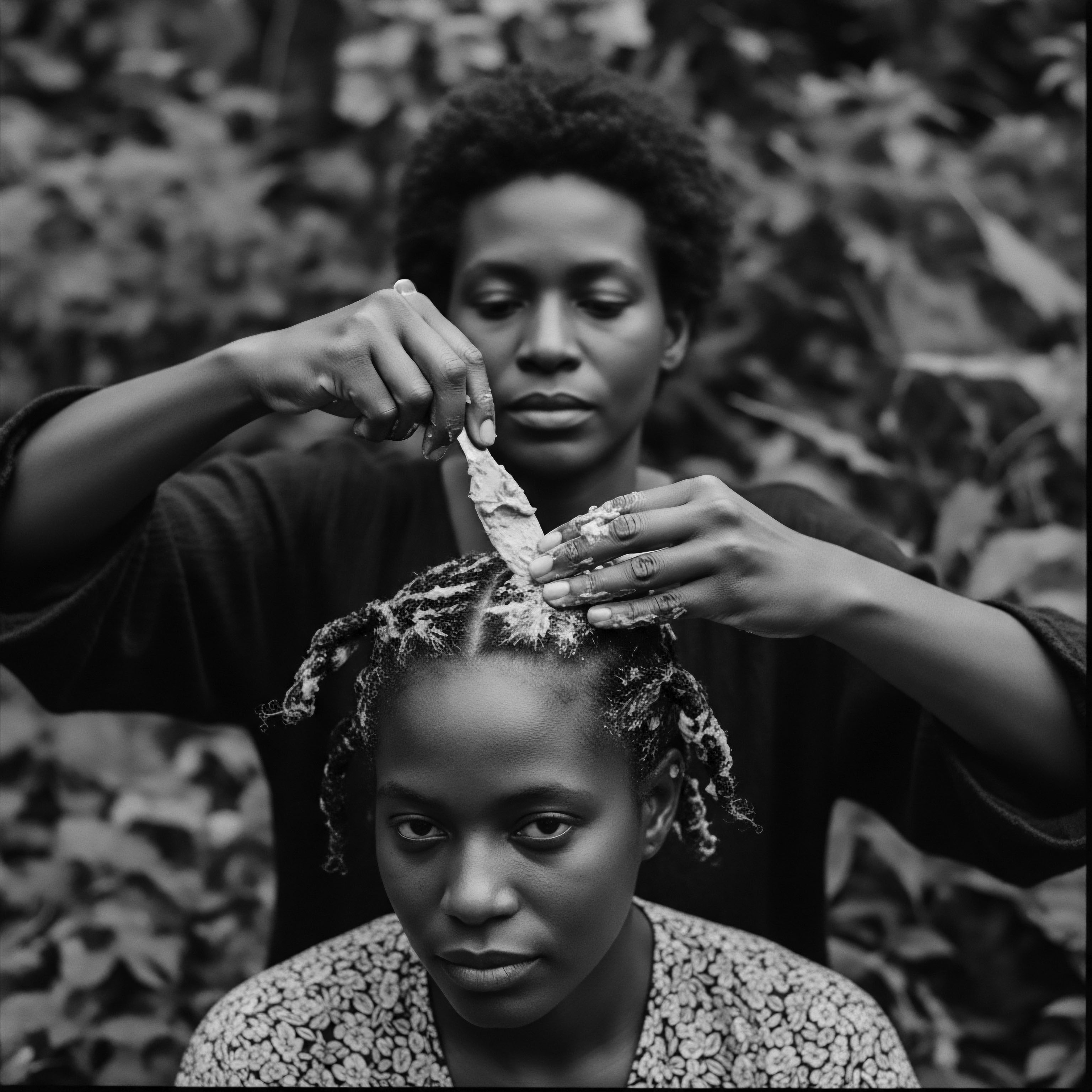
Fundamentals
Within the vast lexicon of wellness and the profound story of textured hair, the term ‘Oxidative Stress’ stands as a fundamental concept, a silent force shaping the vitality of our strands. At its simplest, this condition represents an imbalance, a disruption in the delicate equilibrium within the body’s cells. It occurs when there is an excess of reactive molecules, often called Free Radicals, and the body’s capacity to neutralize them with protective compounds, known as Antioxidants, is overwhelmed. Think of it as a quiet battle taking place on a microscopic level, where the very building blocks of life face relentless assault.
This imbalance, while unseen, carries tangible consequences for the health and appearance of hair, particularly for textured strands which possess a unique architecture. The cellular structures that give textured hair its distinctive coils, curls, and kinks are particularly susceptible to external pressures. When the scales tip towards an abundance of these reactive molecules, the integrity of hair proteins, the vibrancy of natural pigment, and the very health of the scalp can be compromised. This initial understanding of Oxidative Stress offers a gateway into appreciating the deeper mechanisms at play within our hair and the ancestral wisdom that instinctively sought to maintain balance.
Oxidative Stress, at its core, represents a cellular imbalance where harmful reactive molecules outnumber the body’s protective antioxidants, quietly affecting the vitality of our hair.

The Cellular Whisper
Every cell within our being, including those responsible for hair growth and health, conducts countless metabolic processes. These processes, while essential for life, naturally produce some reactive byproducts. Under normal circumstances, the body possesses a sophisticated defense system, an array of internally generated antioxidants and those sourced from our environment, to neutralize these molecules. This harmonious state allows for healthy cellular function, ensuring robust hair growth and vibrant strands.
However, when external factors like environmental pollutants, harsh chemicals, or even certain dietary choices increase the production of these reactive molecules beyond what the body can effectively manage, the whisper of cellular activity turns into a strain. This strain manifests as Oxidative Stress, initiating a cascade of effects that can impair the hair follicle’s ability to produce strong, healthy fibers and diminish the inherent beauty of textured hair. The explanation of this cellular strain helps to frame the subsequent discussion of its broader implications for hair heritage.
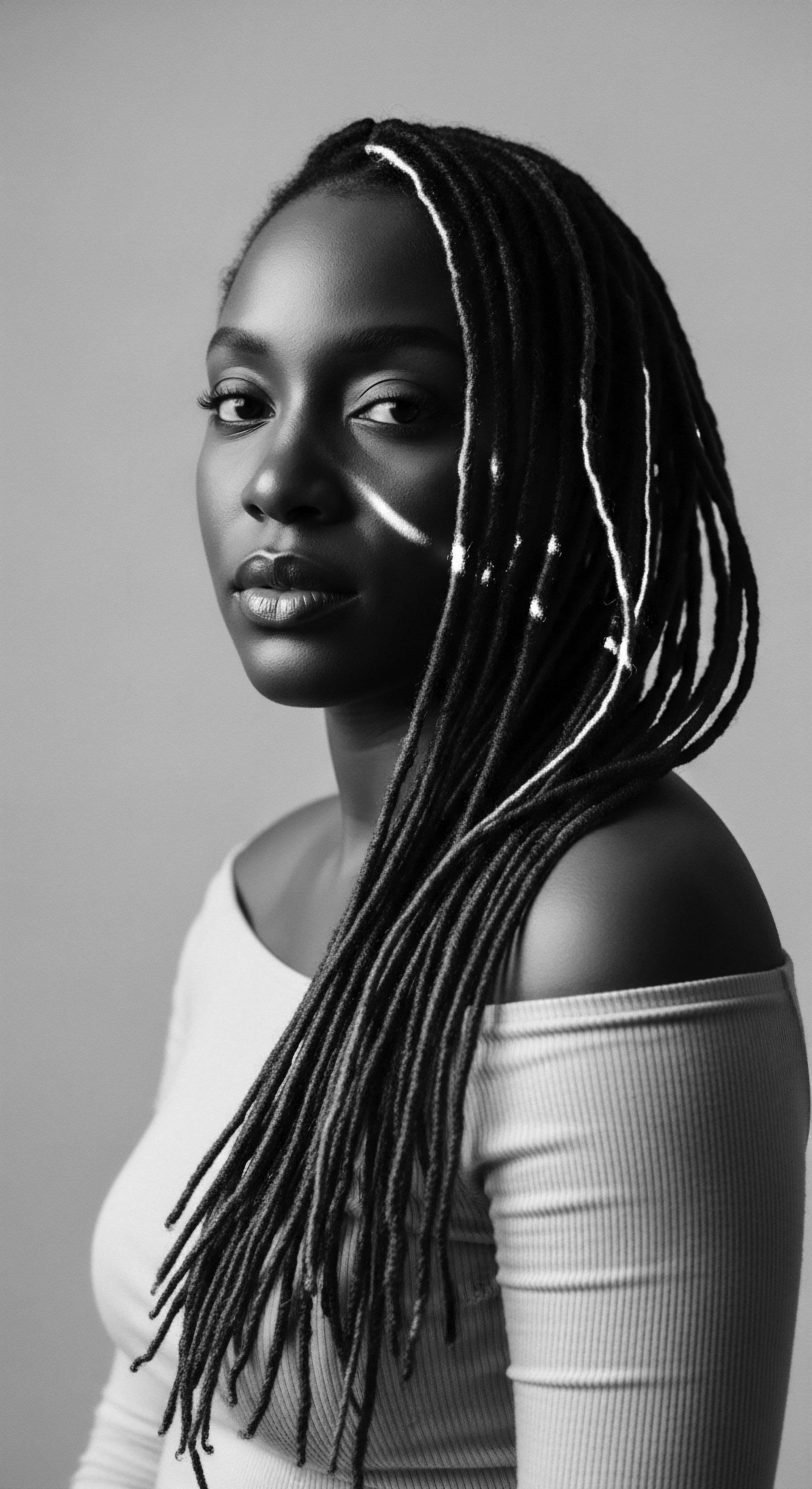
Intermediate
Moving beyond the basic explanation, the meaning of Oxidative Stress within the context of hair health deepens, revealing a more intricate interplay of biological processes and environmental influences. It is not merely a simple imbalance but a complex condition where Reactive Oxygen Species (ROS) and Free Radicals, highly unstable molecules with unpaired electrons, seek stability by reacting with and damaging cellular components. These components include the very proteins that form the hair shaft, the lipids that provide its protective barrier, and the melanin responsible for its color. The description of this molecular aggression clarifies the destructive potential at hand.
The generation of these aggressive molecules stems from both internal metabolic processes and external stressors. Sunlight, particularly ultraviolet (UV) radiation, stands as a prominent external contributor. UV radiation directly impacts hair, breaking down protein bonds and generating free radicals within the hair shaft, which then accelerate hair aging and deterioration.
Furthermore, exposure to pollutants in the air can trigger similar oxidative processes, accumulating on the scalp and hair follicles, potentially leading to blockages and contributing to hair health challenges. Understanding these pathways allows for a more informed approach to care, one that acknowledges the constant environmental dialogue our hair engages in.
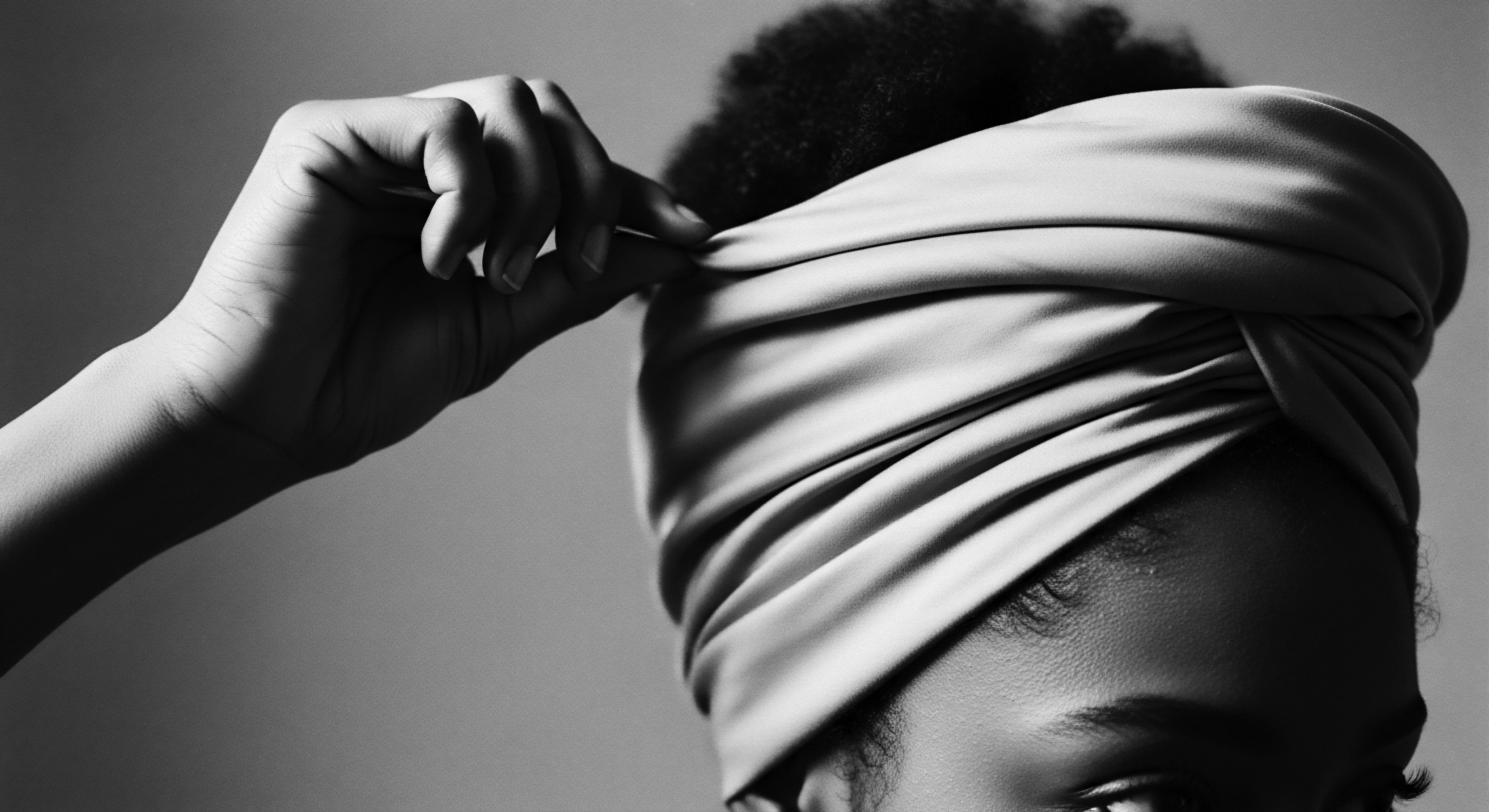
The Hair’s Intrinsic Architecture and External Pressures
Textured hair, with its unique structural characteristics—including its elliptical cross-section and the distribution of melanin—possesses both inherent strengths and particular vulnerabilities to oxidative damage. The coiled nature of these strands means that natural oils produced by the scalp, which offer a degree of natural protection, do not travel down the hair shaft as readily as on straight hair. This can leave certain areas more exposed to environmental aggressors.
- Melanin’s Dual Role ❉ Melanin, the pigment that lends hair its color, offers a natural defense against UV radiation by absorbing and dissipating harmful rays. Yet, prolonged exposure to UV can degrade melanin, creating oxidative species that further contribute to damage. This dual capacity highlights a subtle paradox within hair’s own protective mechanisms.
- Keratin Degradation ❉ The primary protein of hair, Keratin, is particularly susceptible to oxidative reactions. When free radicals interact with amino acids like tyrosine, tryptophan, and cysteine within the keratin structure, it leads to the formation of stable carbon and sulfur radicals, compromising the hair’s structural integrity. This manifests as increased porosity, reduced flexibility, and a deterioration in hair texture.
- Lipid Alterations ❉ Oxidative stress also affects the lipid composition of hair. A decrease in vital lipids such as vitamin A fatty acid esters and ceramides can occur, which are crucial for hair follicle development and the hair’s barrier function. This reduction can contribute to increased brittleness and compromised barrier integrity.
The meaning of Oxidative Stress extends to how it impacts the hair’s physical attributes, leading to dryness, brittleness, loss of shine, and changes in color. These alterations are not merely cosmetic; they signal deeper cellular distress that can hinder hair growth and contribute to breakage. For communities with textured hair, who have historically navigated diverse climates and environmental conditions, this scientific understanding echoes ancestral observations about the need for consistent moisture and protective practices.
Oxidative Stress impacts hair’s core components—melanin, keratin, and lipids—leading to changes in color, strength, and texture, particularly affecting textured hair’s unique structure.
Protective hairstyles, such as braids, twists, and locs, which have roots in African cultures dating back thousands of years, serve as an intuitive response to environmental stressors. These styles minimize manipulation and exposure to harsh elements, implicitly guarding against the very forms of damage now understood through the lens of oxidative stress. This ancient wisdom, passed down through generations, provides a powerful testament to the community’s deep understanding of hair care long before the advent of modern scientific terminology.
| Traditional Practice Oiling with plant-based butters and oils (e.g. Shea, Marula, Baobab) |
| Cultural Origin/Significance West Africa, Southern Africa. Used for centuries to moisturize, protect, and promote hair growth. |
| Modern Scientific Link to Oxidative Stress Many traditional oils possess high antioxidant content (Vitamin E, oleic acid) that combat free radicals and protect hair from environmental damage. |
| Traditional Practice Herbal rinses and masks (e.g. Rooibos tea, Hibiscus, African Black Soap) |
| Cultural Origin/Significance Various African communities. Used for scalp health, strengthening hair, and promoting growth. |
| Modern Scientific Link to Oxidative Stress Herbs like Rooibos tea and Hibiscus are rich in antioxidants, reducing oxidative stress on the scalp and supporting healthy hair follicles. African Black Soap contains vitamins A and E, which nourish the scalp. |
| Traditional Practice Protective Hairstyles (Braids, Locs, Threading) |
| Cultural Origin/Significance Ancient African cultures (dating back to 3500 BC). Signified status, ethnicity, and provided practical protection. |
| Modern Scientific Link to Oxidative Stress Minimizes direct exposure of hair strands to environmental aggressors like UV radiation and pollution, thus reducing oxidative damage and breakage. |
| Traditional Practice These ancestral practices, often rooted in available botanicals and communal wisdom, reveal an inherent understanding of hair's resilience against environmental pressures. |
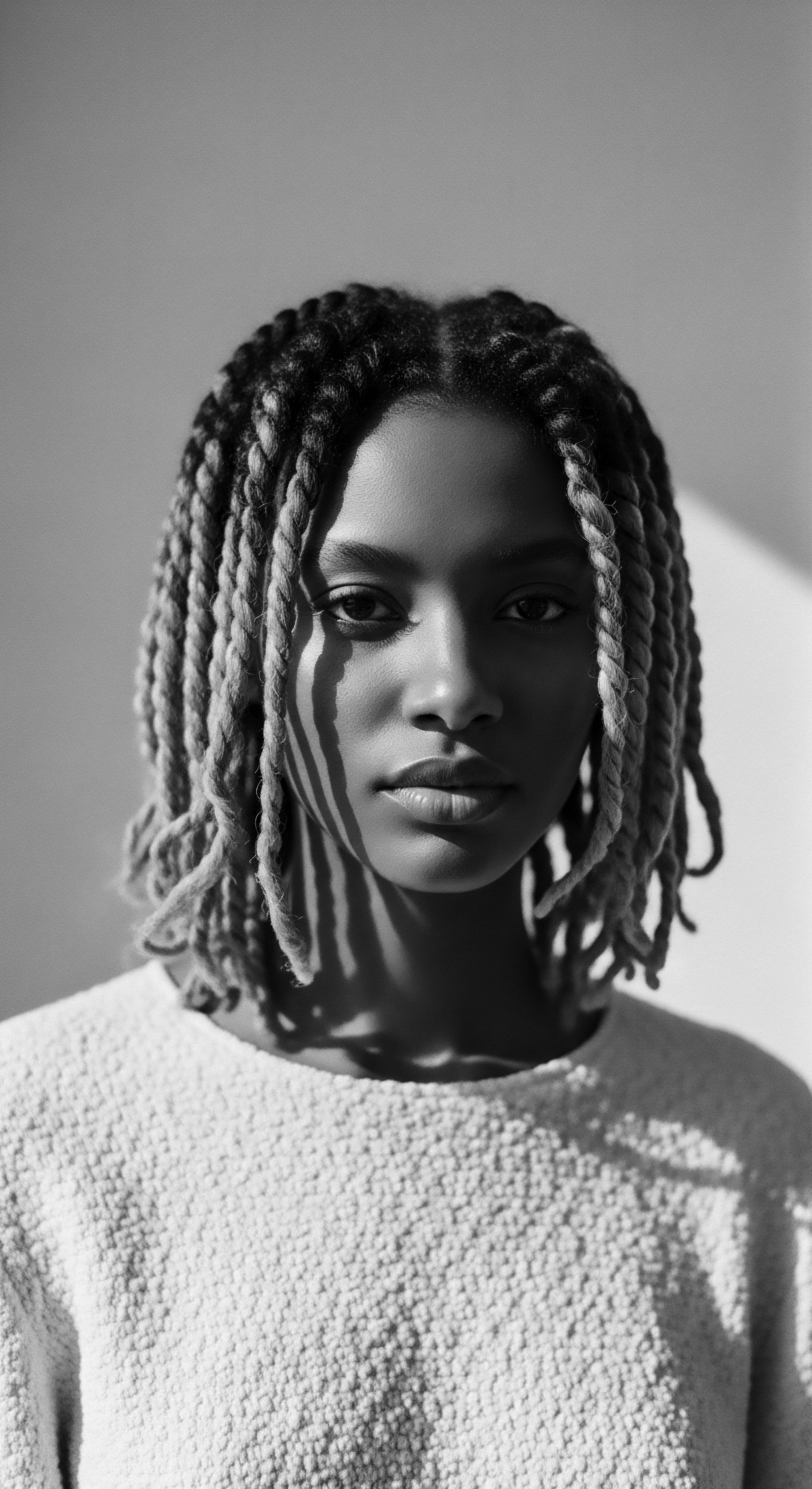
Academic
The academic elucidation of Oxidative Stress transcends its general meaning, presenting it as a profound cellular perturbation where the delicate redox homeostasis is critically compromised. This state arises from an overproduction of reactive oxygen species (ROS) and reactive nitrogen species (RNS), coupled with an inadequacy in the endogenous antioxidant defense mechanisms. These highly reactive molecules, including superoxide radicals, hydroxyl radicals, and hydrogen peroxide, initiate deleterious chain reactions that culminate in irreversible damage to macromolecules such as DNA, proteins, and lipids within the hair follicle and shaft. The comprehensive definition thus encompasses not only the presence of damaging agents but also the failure of intrinsic biological systems to mitigate their effects.
The intricate biology of hair, particularly textured hair, positions it as a distinctive subject for exploring the ramifications of oxidative stress. The unique helical structure of textured hair, characterized by its elliptical cross-section and varied curl patterns, influences cuticle integrity and the distribution of natural sebum, which acts as a protective lipid barrier. This structural nuance means that areas of higher curvature may experience increased mechanical stress, which, when compounded by oxidative damage, can exacerbate cuticle lifting and protein degradation. The consequence is a hair fiber with diminished tensile strength, increased porosity, and a heightened susceptibility to environmental aggressors.
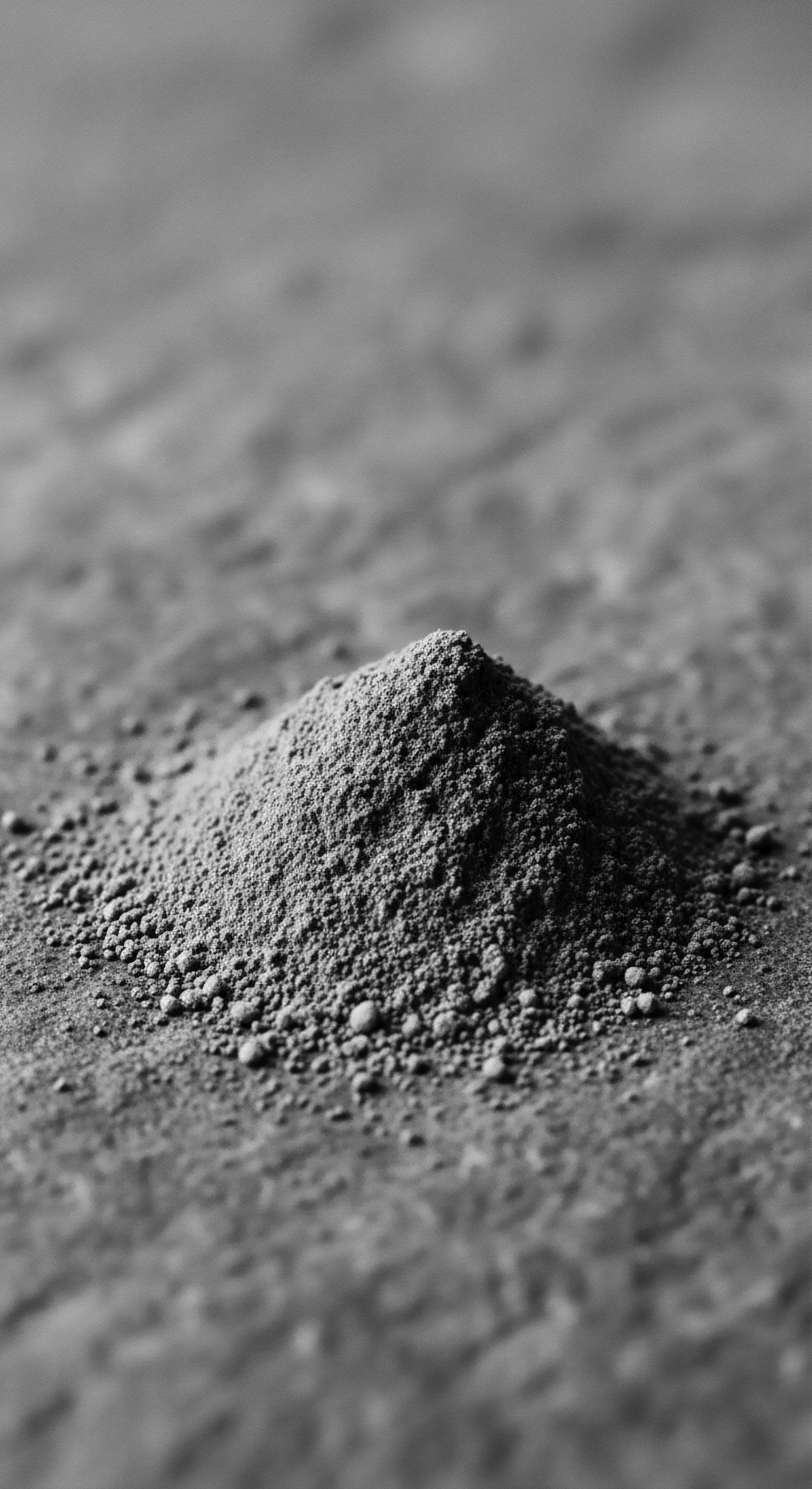
Molecular Mechanisms and Their Manifestations
At a molecular level, the oxidative assault on hair is multifaceted. Melanin, the biopolymer responsible for hair color, while a natural photoprotectant, becomes a target itself. UV radiation induces its degradation, yielding secondary oxidative species that contribute to a vicious cycle of damage. This process explains the observed fading and color changes in hair exposed to sunlight.
Beyond pigmentation, the structural proteins, primarily Keratin, undergo direct oxidative modification. Amino acid residues such as cysteine, methionine, tryptophan, and tyrosine, which are vital for maintaining keratin’s disulfide bonds and overall structural integrity, are particularly vulnerable. The oxidation of these residues leads to protein fragmentation and the formation of unstable radicals, diminishing the hair’s mechanical properties and increasing its fragility.
Furthermore, the lipid matrix surrounding and within the hair fiber is subject to peroxidation, generating aldehydes and other cytotoxic compounds. This degradation of essential fatty acids and ceramides compromises the hair’s hydrophobicity and barrier function, leading to increased moisture loss and a predisposition to dryness and breakage. The implications for textured hair, which naturally experiences greater challenges in moisture retention due to its coiling, are particularly significant.
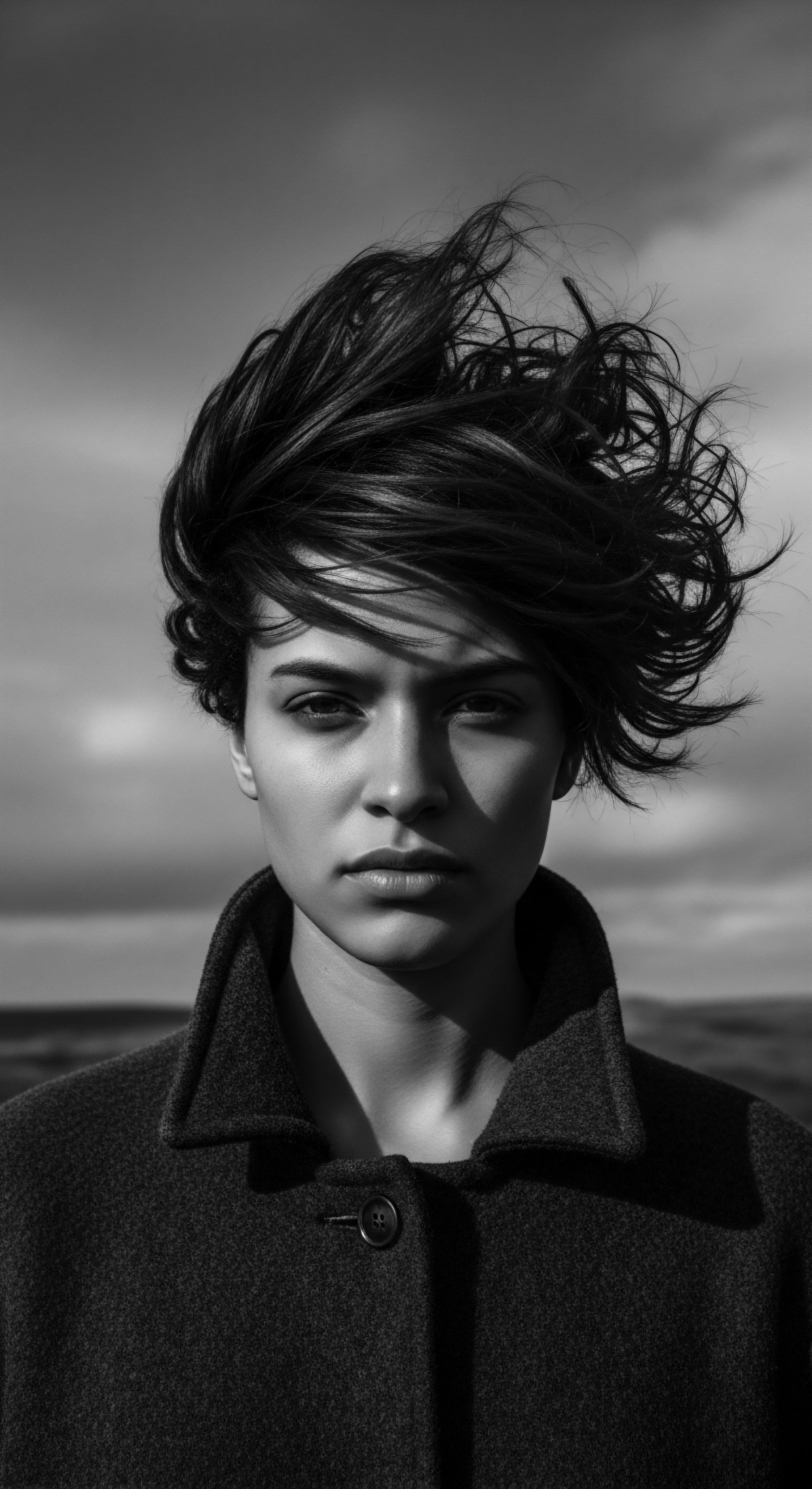
Ancestral Resilience ❉ A Historical Perspective on Environmental Stressors
The concept of oxidative stress, while articulated through modern scientific terminology, finds a compelling echo in the historical experiences and ancestral practices of Black and mixed-race communities. For centuries, these communities, often residing in regions with intense solar radiation and navigating diverse environmental conditions, developed sophisticated hair care traditions that, whether consciously understood or intuitively practiced, served as a defense against environmental oxidative stressors.
Consider the historical realities of forced migration and enslavement. During the transatlantic slave trade, enslaved Africans were often subjected to extreme environmental conditions, including prolonged exposure to harsh sun and inadequate nutrition. The systematic erasure of cultural practices, including hair care rituals, compounded the physical toll. Yet, even under these oppressive circumstances, a legacy of resilience manifested through covert means.
Hair, shorn during the Middle Passage as an act of dehumanization, later became a canvas for resistance and cultural continuity. Survivors adapted, using whatever natural resources were available to maintain their hair, often employing practices that implicitly combated environmental damage.
A poignant illustration of this ancestral wisdom can be observed in the traditional use of plant-based oils and butters in various African communities. For instance, the widespread application of Shea Butter (Vitellaria paradoxa) across West Africa, or Marula Oil (Sclerocarya birrea) in Southern Africa, served as more than just moisturizers. These botanicals, rich in fatty acids and naturally occurring antioxidants like tocopherols (Vitamin E) and polyphenols, provided a protective shield against the sun’s damaging UV rays and environmental pollutants.
Modern scientific analysis validates this ancestral insight; a study published in MDPI’s ‘Cosmetopoeia of African Plants in Hair Treatment and Care’ notes that a significant number of African species traditionally used for hair care, such as those from the Lamiaceae and Asteraceae families, possess high antioxidant yields, some even promoting the production of endogenous antioxidants like superoxide dismutase. This suggests that ancient practices were not merely cosmetic but biochemically sophisticated, offering tangible protection against cellular damage now recognized as oxidative stress.
Ancestral hair care practices, particularly the use of antioxidant-rich plant oils and protective styles, represent a profound, intuitive defense against environmental oxidative stress, validated by modern scientific inquiry.
The development of Protective Hairstyles, such as braids, twists, and various forms of threading (like “Irun Kiko” among the Yoruba people), also represents a historical response to environmental challenges. These styles were not solely for aesthetic or social signaling, though they served those vital functions, but also physically shielded the hair shaft from direct exposure to the sun, wind, and dust. By minimizing manipulation and environmental exposure, these styles inherently reduced the accumulation of free radical damage on the hair fiber and scalp, preserving moisture and strength over extended periods. This enduring tradition, passed down through generations, highlights a deep, embodied knowledge of hair preservation that predates the scientific lexicon of oxidative stress.
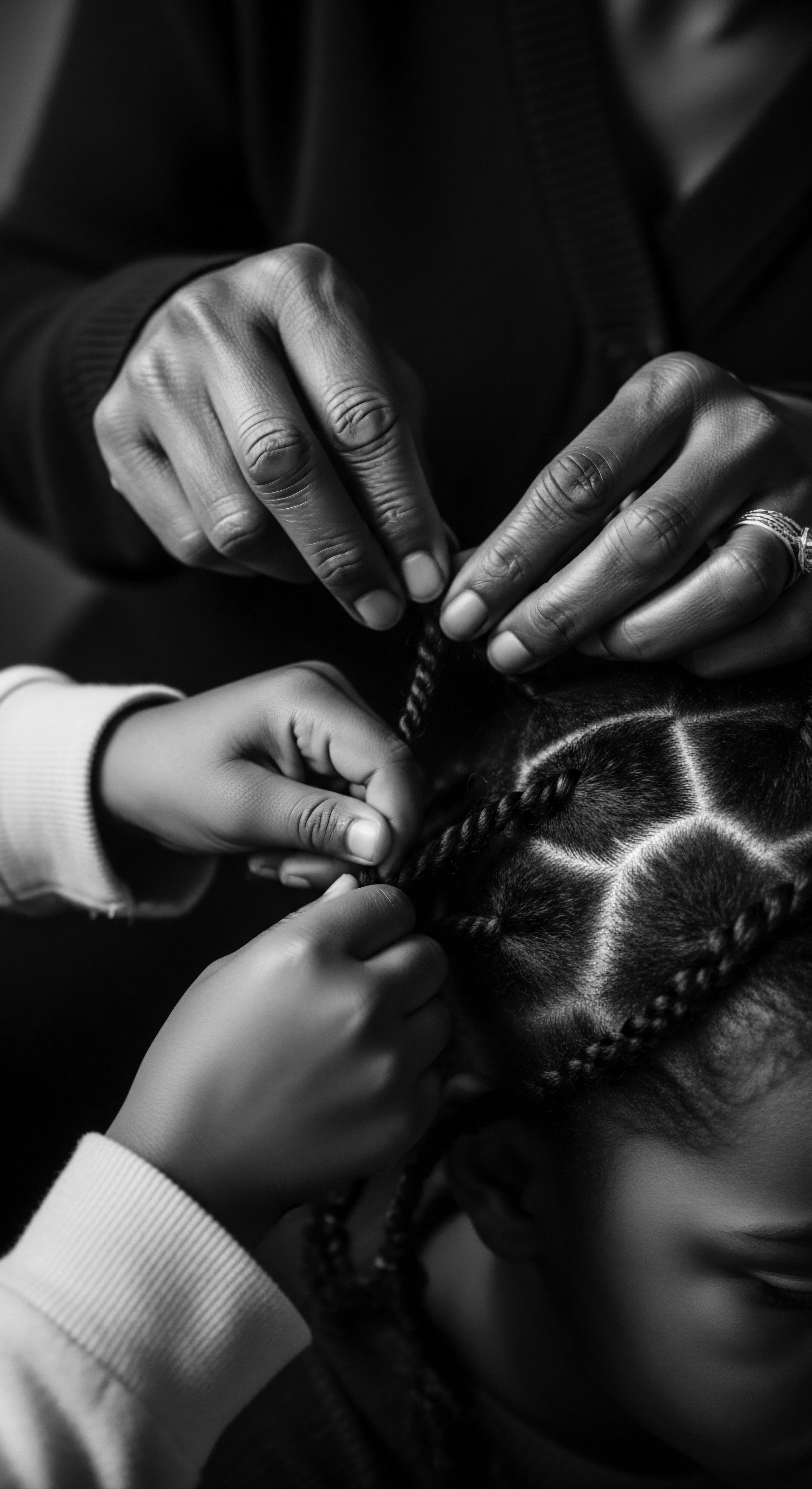
The Societal and Epigenetic Dimensions of Oxidative Stress in Textured Hair
Beyond the purely biochemical, the meaning of oxidative stress extends into the psychosocial and even epigenetic realms for textured hair. The persistent societal pressures to conform to Eurocentric beauty standards, often necessitating chemical relaxers or excessive heat styling, introduce significant exogenous stressors. Chemical relaxers, by their very nature, involve severe oxidative reactions to break disulfide bonds in the hair, causing substantial damage and increasing susceptibility to further oxidative insult. This historical and ongoing imposition of damaging practices, driven by a complex interplay of systemic racism and beauty ideals, has had a profound impact on the health of Black and mixed-race hair.
Moreover, chronic stress, whether environmental, nutritional, or psychological, can indirectly contribute to systemic oxidative stress within the body, potentially impacting hair follicle health and growth cycles. While direct links between systemic stress-induced oxidative stress and specific textured hair conditions require more focused research, the holistic wellness advocate within Roothea acknowledges the interconnectedness of mind, body, and hair. Ancestral wisdom often linked well-being to communal harmony and a connection to the land, practices that inherently mitigated stressors. The contemporary challenge involves navigating a world where these traditional buffers are often absent, leading to new forms of hair challenges that necessitate both scientific understanding and a return to heritage-informed care.
The long-term consequences of unmitigated oxidative stress on textured hair are profound. They include accelerated hair aging, characterized by premature graying due to melanocyte damage, chronic dryness, increased breakage, and diminished hair density. This understanding compels us to recognize the deep significance of traditional protective measures and the urgency of integrating modern scientific insights with ancestral wisdom to foster true hair wellness. The continued study of indigenous botanicals and historical hair care practices holds promise for identifying novel antioxidant compounds and holistic approaches that honor the legacy of textured hair while addressing contemporary challenges.
- Rooibos Tea (Aspalathus Linearis) ❉ Originating from South Africa, this tea is celebrated for its potent antioxidant and antimicrobial properties. Its high content of polyphenols, including aspalathin and nothofagin, helps combat oxidative stress on the scalp, creating a healthy environment for hair growth and potentially preventing premature graying.
- Baobab Oil (Adansonia Digitata) ❉ Derived from the revered “Tree of Life” in Africa, baobab oil is a rich source of vitamins A, D, E, and F, along with omega fatty acids. Its robust antioxidant properties, notably from β–sitosterol and Vitamin E, shield hair from environmental damage, strengthen weak strands, and contribute to cell membrane renewal, thus protecting against oxidative assault.
- African Black Soap ❉ A traditional West African soap crafted from the ash of locally harvested plants like cocoa pods and plantain skins. It is replete with antioxidants and minerals such as potassium and magnesium, providing nourishment to the scalp and helping to combat oxidative processes that can lead to follicle aging.
- Chebe Powder ❉ Used by women in Chad, this powder, derived from crushed leaves and nuts, is recognized for its protein and amino acid content. While not a direct antioxidant, its primary benefit lies in moisture retention and breakage prevention, thereby indirectly reducing the mechanical and environmental stressors that can exacerbate oxidative damage to the hair shaft.
The ongoing research into these traditional ingredients and practices continues to affirm the wisdom of ancestral care. The academic exploration of oxidative stress, therefore, is not a detached scientific exercise but a validation of the deep knowledge embedded within the heritage of textured hair, offering pathways to more effective and culturally resonant hair wellness strategies.
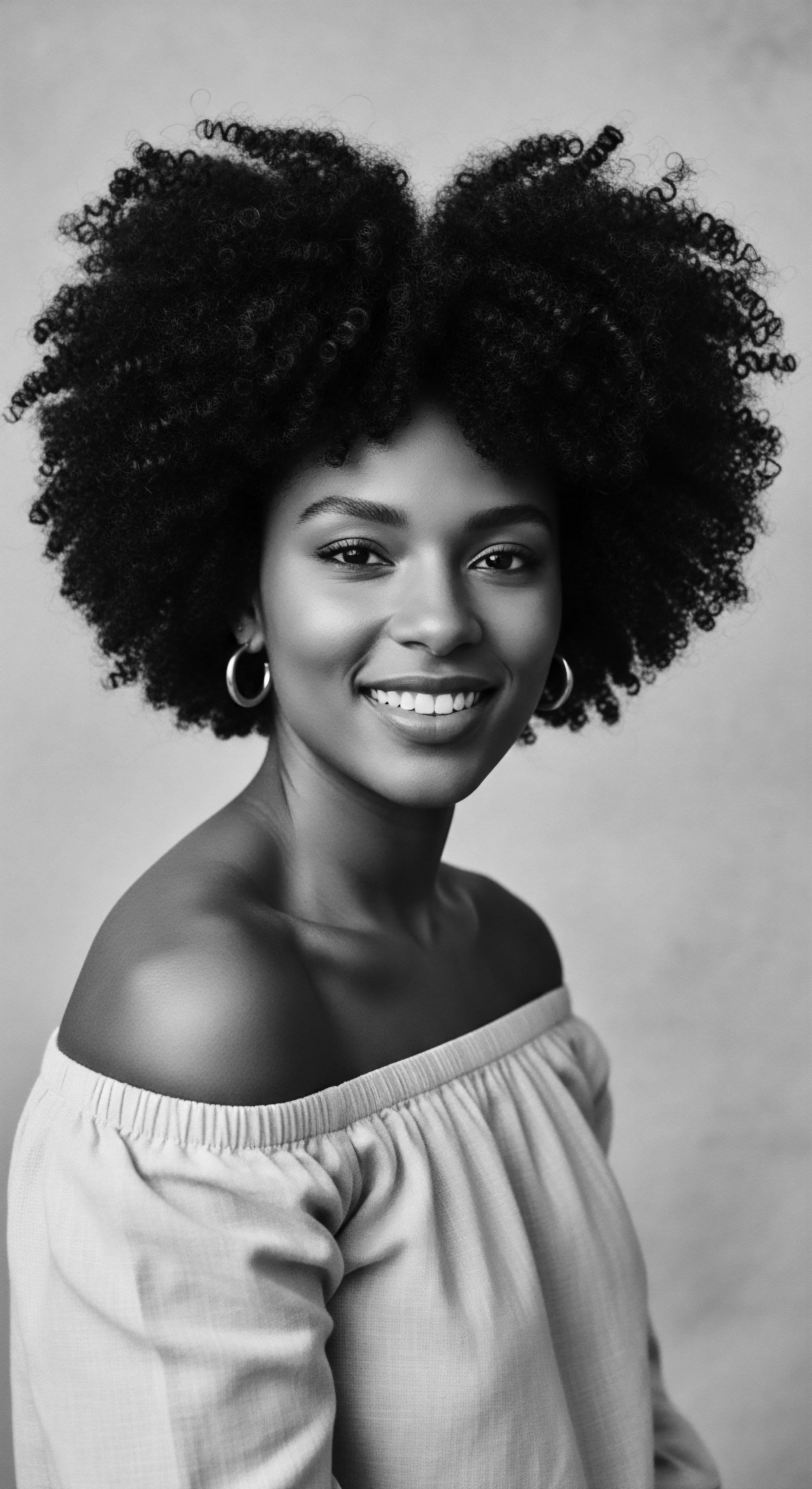
Reflection on the Heritage of Oxidative Stress
As we draw this meditation on Oxidative Stress to a close, we sense a profound connection between the unseen battles within our cells and the enduring legacy of textured hair. The scientific elucidation of free radicals and antioxidants does not diminish the rich history of hair care; rather, it casts a new light upon the intuitive wisdom of our ancestors. From the sun-drenched landscapes of Africa to the diasporic journeys across continents, textured hair has faced a multitude of environmental and societal pressures. Yet, through it all, a deep understanding of preservation, resilience, and vitality persisted, woven into the very fabric of communal life and personal identity.
The ‘Soul of a Strand’ ethos reminds us that each coil and curl carries not only biological information but also echoes of resilience, stories of adaptation, and the collective memory of care passed down through generations. The oils pressed from indigenous plants, the intricate styles crafted for protection, and the communal rituals of grooming were not mere acts of beautification. They were acts of profound care, embodying an implicit knowledge of how to guard against the very forces that modern science now terms oxidative stress. This heritage invites us to look beyond fleeting trends and reconnect with practices that truly honor the inherent strength and unique needs of textured hair.
Our journey through the understanding of oxidative stress in textured hair culminates in a call to reverence for this ancestral wisdom. It is a testament to the ingenuity and adaptive spirit of communities who, without microscopes or chemical analyses, discerned the properties of their environment and the plants within it to foster health and beauty. The future of textured hair care, then, lies not in abandoning the past, but in a harmonious convergence ❉ where the clarity of scientific understanding meets the resonant narrative of heritage, creating a path for strands to truly thrive, unbound and vibrant, carrying their stories forward.
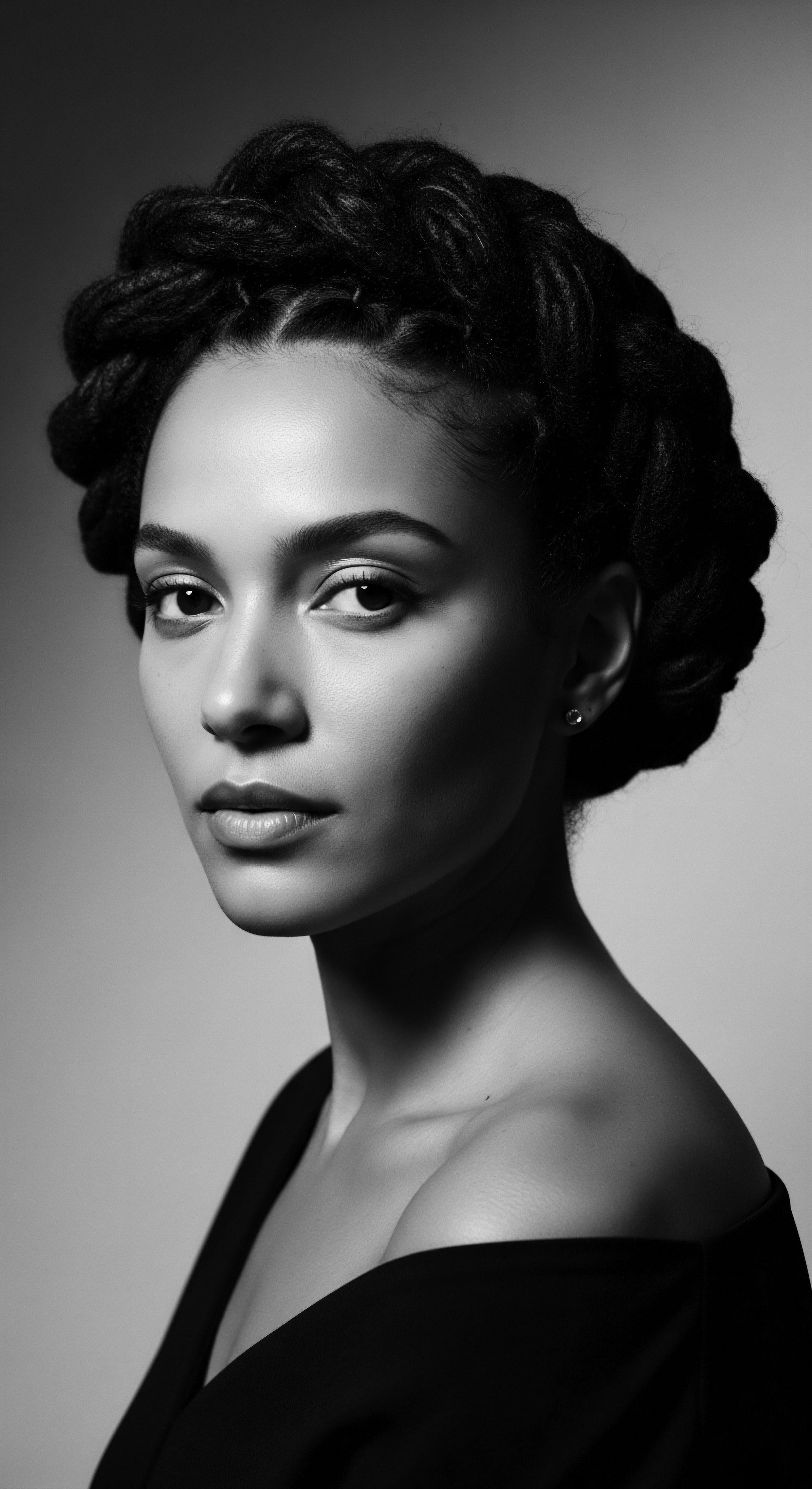
References
- Agyare, C. & Appiah, T. (2018). Cosmetopoeia of African Plants in Hair Treatment and Care ❉ Topical Nutrition and the Antidiabetic Connection?. MDPI, 7(12), 173.
- Ali, A. & Maqbool, M. (2010). Hair oils ❉ Traditional and herbal uses. Journal of Cosmetic Science, 61(6), 415-424.
- de Sousa, D. P. (2011). Bioactive natural products ❉ A review of their potential for pharmaceutical and cosmetic applications. Journal of Natural Products, 74(11), 2419-2429.
- Essel, R. (2017). Afrocultural aesthetics ❉ An inquiry into Ghanaian traditional beauty culture. University of Ghana.
- Gaiduk, S. (2021). Hair as Freedom ❉ The cultural significance of African hair. BUALA.
- Gautam, M. & Singh, V. (2018). Traditional medicinal plants used in hair gel ❉ A short review. Research & Reviews ❉ A Journal of Pharmacognosy, 7(3), 1-5.
- George, R. (2007). Hair Story ❉ Untangling the Roots of Black Hair in America. St. Martin’s Press.
- Gore, A. (2013). Oxidative Stress ❉ An Overview. CRC Press.
- Johnson, A. M. (2019). The Black Hair Handbook ❉ A Practical Guide to Healthy Hair for All Textures. Black Inc.
- McMichael, A. J. (2003). Hair and Scalp Diseases ❉ Medical and Surgical Approaches. Informa Healthcare.
- Robbins, C. R. (2012). Chemical and Physical Behavior of Human Hair. Springer.
- Schwartz, J. & Maes, D. (2013). The exposome impact on hair health ❉ etiology, pathogenesis and clinical features – Part I. Journal of Cosmetic Dermatology, 12(2), 105-115.
- Smith, J. (2016). Ethnobotany of African Hair Care ❉ A Historical and Contemporary Analysis. University of London Press.
- Sperling, L. C. (2003). Hair ❉ A Physician’s Guide. Mosby.
- Wallace, C. (2015). African Hairstyles ❉ Cultural Significance and Legacy. Afriklens.
